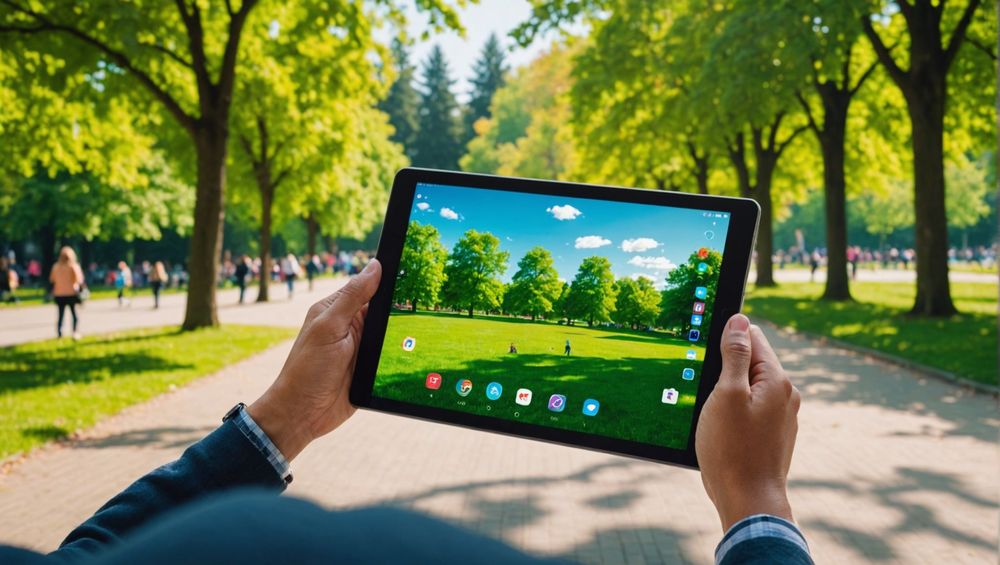AMOLED stands for Active Matrix Organic Light Emitting Diode, a technology that has revolutionized the display industry by providing superior color reproduction, higher contrast ratios, and more energy-efficient screens. It is commonly found in smartphones, televisions, and other OLED devices due to its ability to render deep blacks and vivid visuals. Unlike traditional LCD screens, where backlighting is required, AMOLED panels emit their own light, allowing for thinner and more flexible display designs. In this article, we will delve deeper into the intricacies of AMOLED technology, exploring its advantages, differences from other display technologies, and popular applications.
The Basics of AMOLED Technology

AMOLED utilizes organic compounds that emit light when an electric current is applied. This process involves several key components:
- Active Matrix Driver: This component controls the individual pixels of the display, enabling faster refresh rates and enhanced responsiveness.
- Organic Layers: These layers, made up of organic molecules, are responsible for the light emitted. Each pixel can be turned on or off independently, allowing for true black levels.
- Substrate: The substrate supports the organic layers and can be made from various materials, impacting the display’s flexibility and durability.
- Encapsulation: This layer protects the organic materials from moisture and oxygen, which can degrade performance over time.
This combination of components allows AMOLED displays to achieve a high level of efficiency, color accuracy, and contrast, making them a popular choice for modern devices.
Advantages of AMOLED Displays

AMOLED technology offers numerous benefits over traditional LCD displays, making it a preferred option among manufacturers and consumers alike. Here are some key advantages:
- Superior Color Accuracy: AMOLED displays can produce more vibrant colors, providing a richer viewing experience.
- True Black Levels: Unlike LCDs, AMOLED can completely turn off pixels, resulting in true blacks and enhanced contrast.
- Energy Efficiency: Since black pixels are turned off, AMOLED screens can save battery life, especially when displaying darker content.
- Thin and Flexible Designs: The absence of a backlight allows manufacturers to create thinner and more flexible screens, paving the way for innovative device designs.
- Wider Viewing Angles: AMOLED displays offer wider viewing angles without significant color distortion.
These advantages contribute significantly to the growing popularity of AMOLED technology in various application areas.
AMOLED vs. Other Display Technologies
Understanding the differences between AMOLED and other display technologies is crucial for consumers making informed purchasing decisions. Let’s compare AMOLED with some of its primary competitors:
- LCD (Liquid Crystal Display): LCDs require a backlight, which affects their contrast and color reproduction. They tend to be bulkier and less energy-efficient than AMOLED screens.
- OLED (Organic Light Emitting Diode): While both OLED and AMOLED share similar principles, AMOLED employs an active matrix system that improves response times and refresh rates, making it superior for fast-moving visuals.
- Mini-LED and MicroLED: These newer technologies also aim to improve brightness and contrast but they still rely on backlighting, whereas AMOLED’s self-emissive properties maintain its advantages in certain scenarios.
Each technology has its niche, but AMOLED continues to shine in areas where vibrant colors and deep contrasts are paramount.
Applications of AMOLED Technology
The versatility of AMOLED technology allows it to be employed in various applications beyond smartphones. Some notable applications include:
- Smartphones: Most flagship smartphones now feature AMOLED displays for enhanced visual experiences.
- Televisions: High-end TVs often use AMOLED panels to deliver stunning images with rich colors and deep blacks.
- Wearables: Smartwatches and fitness trackers benefit from AMOLED’s power efficiency, extending battery life during heavy usage.
- Tablets and Laptops: Many tablets and laptops now incorporate AMOLED displays for superior multimedia experiences.
- Virtual Reality (VR): AMOLED is favored in VR devices due to its fast response time and high-resolution capabilities.
These diverse applications affirm the significant role AMOLED technology plays in modern display solutions.
Conclusion
AMOLED technology is at the forefront of modern display solutions, offering unparalleled color accuracy, energy efficiency, and thin designs. Its advantages over traditional LCD and even other OLED technologies have made it the go-to choice for high-performance screens in a variety of devices. As technology continues to evolve, AMOLED displays will likely remain a vital component of how we interact with our digital world.
FAQs
- What does AMOLED stand for?
AMOLED stands for Active Matrix Organic Light Emitting Diode, which is a display technology that allows for individual control of pixels. - What is the main advantage of using AMOLED displays?
The primary benefits of AMOLED displays include superior color accuracy, true black levels, energy efficiency, and thinner designs. - How does AMOLED differ from OLED?
While both use organic materials to emit light, AMOLED employs an active matrix technology that improves refresh rates and response times. - Can AMOLED displays consume more battery?
Typically, AMOLED displays can actually save battery life when displaying dark images because black pixels are turned off, but they may consume more power with bright images. - Are AMOLED screens prone to burn-in?
Yes, AMOLED screens can experience burn-in due to static images persisting over time, but technology advancements are mitigating this issue in modern displays.





